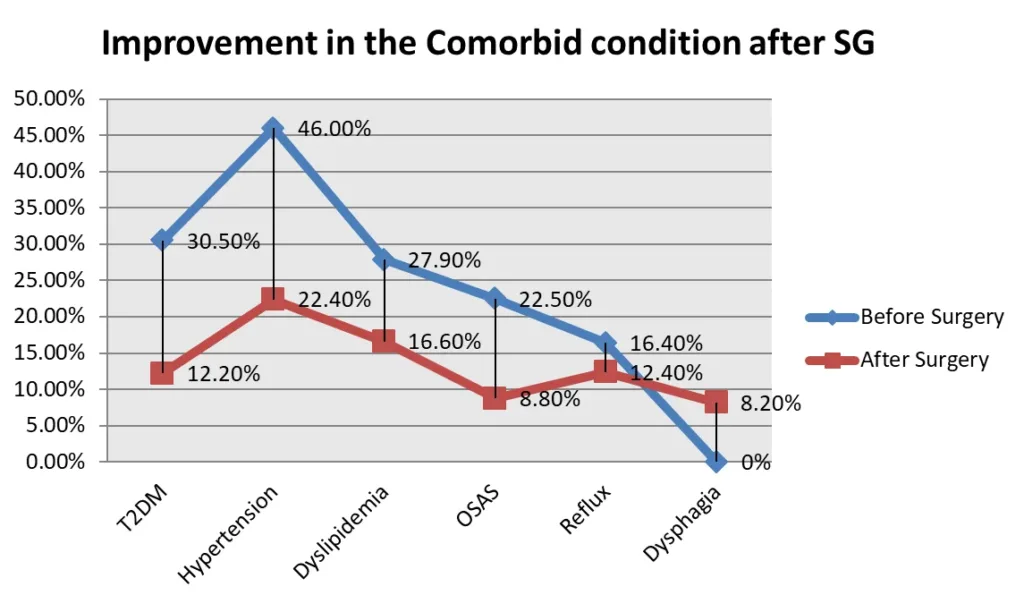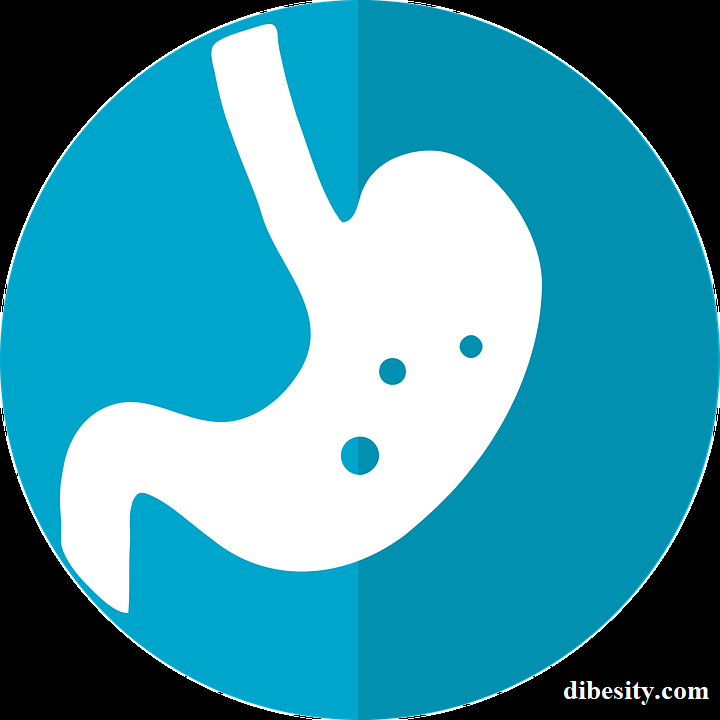Ozempic vs bariatric surgery is basically a comparison of semaglutide and gastric sleeve and gastric bypass for weight loss and diabetes.
Ozempic and Wegovy are two Diabetes and Weight Loss injections. Ozempic, when given in higher doses (Wegovy) can result in significant weight loss.
Although weight loss surgeries such as Gastric Sleeve surgery can reduce the body weight by half, Ozempic is an alternative to Gastric Sleeve, especially where contraindications to Gastric Sleeve exist.
What is Ozempic (and Wegovy)?
Ozempic and Wegovy are essentially the same drugs with different strengths. Because of the strengths of the two formulations, Ozempic is approved for Diabetes while Wegovy is approved for weight management.
Semaglutide is the actual name of all three formulations, Rybelsus, Ozempic, and Wegovy. It is the latest medicine that has been approved for weight loss.
Among all the weight loss medicines approved by FDA until now, it is considered the most effective and superior to all the other drugs.
Tirzepatide (Mounjaro) has shown to be superior to Ozempic and Wegovy in clinical trials, however, it has not been approved for weight loss until now.
| Buy: | Read: |
The key differences between Wegovy, Rybelsus, and Ozempic are:
- Ozempic is a once-weekly Semaglutide administered in doses of 0.25 mg, 0.5 mg, 1 mg, and 2 mg.
- Wegovy is a high-dose formulation of Semaglutide. It is administered in a dose of 2.4 mg subcutaneously once a week.
- Rybelsus is an oral formulation, available as tablets, and administered daily.
Wegovy has been FDA-approved only for obesity and weight loss.
Rybelsus and Ozempic have only been approved for the management of patients with Diabetes Mellitus type 2. It is currently investigated for weight loss in higher doses (of up to 50 mg per day)
Ozempic and Wegovy have been found in clinical trials to cause marked weight loss by the following mechanisms:
- It inhibits gastric movements. This causes stomach fullness immediately after the person starts eating. This may also be associated with nausea.
- It inhibits the absorption of food from the gastrointestinal tract.
- When food is slowly allowed to enter the intestine, the spike in blood glucose and insulin is lowered. Since Insulin is an anabolic hormone, low insulin spikes after meals cause less weight gain.
- It activates the satiety center in the brain reducing cravings, especially for foods with a high glycemic index.
| Buy: | Read: |
How effective are Ozempic and Wegovy for weight loss?
Ozempic is not approved for weight loss but Wegovy is. However, both these drugs have been associated with significant weight loss of 10% to 16%.
Wegovy vs Placebo in Obese Non-diabetic Individuals:
The STEP-1 trial evaluated the weight loss effect of Wegovy compared to the placebo in obese non-diabetic individuals.
This trial demonstrated a weight loss of 14.9% in the Wegovy group compared to the placebo after 68 weeks of treatment.
Wegovy vs Placebo in Obese Diabetic Individuals:
The STEP-2 trial was conducted in obese individuals with Diabetes Mellitus Type 2 who had a BMI of 27 kg/m² or more and glycated hemoglobin of 7 to 10%.
After 68 weeks of therapy, Wegovy resulted in a weight loss of 9.6% compared to 3.4% in the placebo group.
| Buy: | Read: |
Wegovy vs Placebo in obese individuals with at least one weight-related condition:
The STEP-3 trial was conducted in obese individuals who had a BMI exceeding 27 kg/m² and one weight-related comorbid condition such as diabetes, hypertension, etc.
Patients were given a placebo or Wegovy 2.4 mg once a week along with intensive lifestyle intervention including a low-calorie diet and exercise.
Individuals in the Wegovy group had a weight loss of 16% after 68 weeks compared to 5.7% in the placebo group.
Wegovy for the maintenance treatment of Obesity in non-diabetic individuals:
The STEP-4 trial evaluated whether maintenance treatment with Wegovy in non-diabetic individuals can result in sustained weight loss or not.
Patients who were treated with Semaglutide (Wegovy) had sustained weight loss compared to weight gain in the placebo-treated individuals.

| Buy: | Read: |
Gastric Sleeve (Sleeve Gastrectomy):
Gastric sleeve (Sleeve gastrectomy), also called partial gastrectomy, is a surgical procedure in which part of the stomach is cut. This is primarily done by removing the greater curvature of the stomach to make it tubular.
The greater curvature makes most of the stomach. When the greater curvature is removed, almost half of the stomach is removed reducing the capacity of the stomach to 150 ml or less.
This procedure is becoming more popular, however, it can not be reversed as part of the stomach is removed. Surgical staples are used to keep the newly formed small stomach closed.
Once the capacity of the stomach is reduced, individuals feel full immediately after eating. Apart from the feeling of being full, research suggests that sleeve gastrectomy is also associated with significant hormonal and neurochemical changes.
These changes are responsible for less food craving, early satiety, reduced satiety, activation of endogenous GLP-1 analogs, and reduction of the satiety hormone, Ghrelin.
Gastric Sleeve is considered a simpler procedure, however, patients have to make lifestyle changes in eating habits including eating small and frequent meals.
Because Gastric Sleeve is technically simple, it was the most common procedure performed in 2016 for weight loss in the United States.
| Buy: | Read: |
How Is Gastric Sleeve Performed?
Sleeve Gastrectomy is a much simple procedure compared to RYGB (Roux en Y Gastric Bypass). Because it does not require multiple anastomoses, the risk of internal herniation is minimal, and it does not cause proteins and mineral malabsorption, it is considered a safer bariatric procedure.
It is performed by splitting the antrum proximal to the pylorus and a sleeve is made with a French bougie.
The Gastric Sleeve makes the stomach a tubular structure that has a reduced capacity, is resistant to stretch (since the fundus is absent), and has fewer Ghrelin producing cells. It can also impair stomach motility which may be partly responsible for weight loss.
Individuals who undergo sleeve gastrectomy are more likely to develop gastroesophageal reflux disease compared to those who undergo RYGB.
This is because the stomach becomes a high-pressure organ. Modifications to the procedures are being made to make them more feasible.
Laparoscopic Sleeve Gastrectomy is preferred because of being less invasive, however, it is more technical.
| Buy: | Read: |
How much weight loss is expected with Gastric Sleeve?
Bariatric surgical procedures are evolving day by day. Every procedure has its own advantages and disadvantages.
Gastric Sleeve is a single-stage operation. It is not considered a bridge to RYGB and biliopancreatic diversion.
Gastric Sleeve exerts weight loss effects not only by restricting diet but also alters the secretion of hormones such as Ghrelin, GLP-1, and PYY.
Sleeve gastrectomy reduced Ghrelin levels and increases the levels of GLP-1 and PYY. These hormonal changes suppress hunger and improve glycemic control by improving insulin resistance.
Patients who underwent sleeve gastrectomy recorded a weight loss of about 60% after two years of the procedure.
In one study, the mean weight loss, in patients who were morbidly obese, after one year was 45 +/- 17% (ranging from 23% to 79%).
In addition, patients had significant improvement in their weight-related comorbid conditions. This is illustrated in the bar chart below:

Patients in the study had a mean BMI exceeding 40 kg/m² and one or more weight-related comorbid conditions.

There was a significant improvement in the resolution of comorbid conditions.

Ozempic Vs Bariatric Surgery (Gastric Sleeve):
There hasn’t been any head-to-head comparison of Wegovy vs sleeve gastrectomy. However, both weight-loss interventions have their own advantages and disadvantages.
This is summarized below:
Ozempic is way safer than Gastric Sleeve Surgery:
- Ozempic is a medical intervention, hence it is way safer than Gastric Sleeve. Patients who opt for Wegovy treatment have to inject the drug weekly into the skin of the anterior abdomen.
- Contrary to that, Gastric Sleeve is a surgical procedure. It is associated with short-term complications such as:
- Hospitalization
- Anesthesia
- Surgical-site bleeding
- Bed-sores
- Pulmonary embolism, and
- Infections
Ozempic is far less effective than Gastric Sleeve:
- Ozempic is less effective compared to Sleeve gastrectomy. It has been shown to cause about 10% to 16% weight loss from the baseline.
- On the other hand, Gastric Sleeve has been shown to cause a weight loss of about 60% from the baseline.
- The chances of weight gain after treatment discontinuation is greater with Ozempic Vs Gastric Sleeve.
- Gastric Sleeve is way safer in the long run. Contrary to that, Ozempic use can be associated with significant complications such as pancreatitis and an increased incidence of medullary thyroid carcinoma.
- Gastric Sleeve has been found to reverse some of the major complications associated with obesity. These include:
- Diabetes,
- Hypertension
- Obstructive Sleep Apnea
- Dyslipidemia
- Degenerative joint diseases
- Back pain, and
- Edema
Ozempic is much cheaper in the short term but costlier than Gastric Sleeve in the long run:
- The average cost of a Sleeve Gastrectomy ranges from USD 12000 to USD 57000 (depending on the area).
- The monthly cost of Wegovy is around USD 1300 per month (without insurance coverage). This is equivalent to USD 15600 per year.
- So, it is much cheaper in the short term but very costly in the long run.
| Buy: | Read: |
In Conclusion:
- The Weight loss effects of Gastric Sleeve Vs Ozempic and Wegovy are much better.
- Gastric sleeve surgery is cheaper in the long run and the chances of weight regain are minimal compared to Ozempic.
- In moderate obesity, Ozmepic and Wegovy may be used, especially if one wants to avoid surgery. However, in morbid obesity and in patients with genetic obesity, a gastric sleeve is probably the preferred option.



